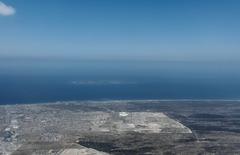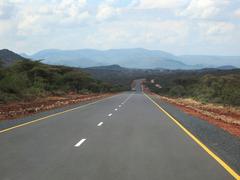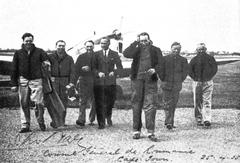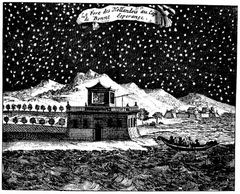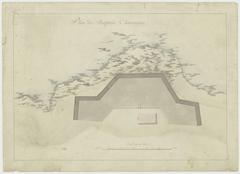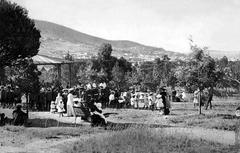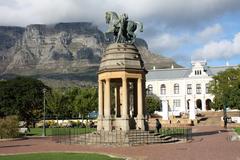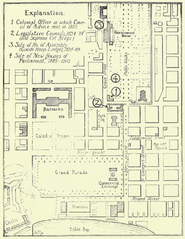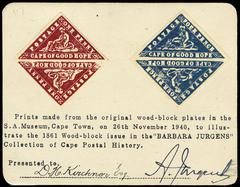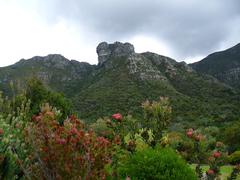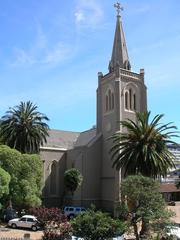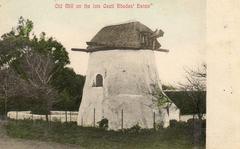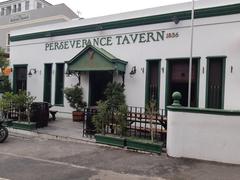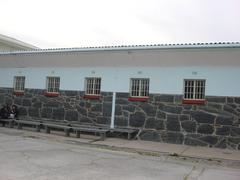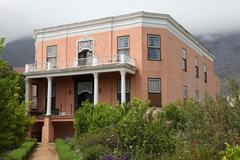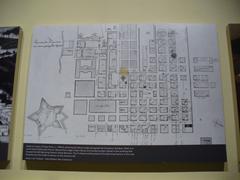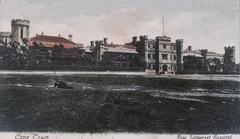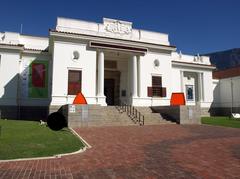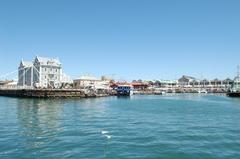Comprehensive Guide to Visiting Klaasenbosch Trail, Cape Town, South Africa
Date: 24/07/2024
Introduction
Nestled within the lush and historic Constantia Valley, the Klaasenbosch Trail in Cape Town, South Africa, offers a unique blend of natural beauty and rich historical significance. This trail winds through areas that have been pivotal since Cape Town’s early colonial era, making it a must-visit for anyone interested in history, nature, or simply looking for a scenic walk. Located in the heart of the Constantia Valley, known for its renowned wine estates like Groot Constantia, the oldest wine estate in South Africa established in 1685, the trail provides a captivating journey through time. The Constantia Valley was originally granted to Simon van der Stel, the then-Governor of the Cape Colony, who saw the area’s potential for viticulture. This early success set the stage for the development of other significant estates, contributing to South Africa’s burgeoning wine industry. The trail also intersects with the Alphen Trail, another historic path that runs through the Alphen Green Belt, further adding to its historical allure. Visitors can explore architectural marvels like the Cellars-Hohenort Hotel, which combines two historic properties dating back to the 18th and 19th centuries. Additionally, the trail is part of the Table Mountain National Park, a UNESCO World Heritage Site celebrated for its biodiversity. With no entrance fee and a variety of nearby attractions such as the Kirstenbosch National Botanical Garden and the Constantia Village, the Klaasenbosch Trail provides an enriching experience that connects visitors with both the past and the natural world.
Table of Contents
- Introduction
- Historical Background
- Architectural and Cultural Heritage
- Natural History and Conservation
- Historical Landmarks Along the Trail
- Modern-Day Preservation Efforts
- Visiting Hours and Tickets
- Visitor Tips
- Nearby Attractions
- FAQs
- Conclusion
- References
Historical Background
Origins and Development
The Klaasenbosch Trail is situated in the Constantia Valley, a region steeped in history and natural beauty. The trail winds through areas that have been significant since the early days of Cape Town’s development. The Constantia Valley is renowned for its wine estates, some of which date back to the 17th century. One of the most notable estates is Groot Constantia, the oldest wine estate in South Africa, established in 1685 by Simon van der Stel, the then-Governor of the Cape Colony.
Historical Significance of the Region
The Constantia Valley has played a pivotal role in the history of Cape Town and South Africa. The valley was originally part of the land granted to Simon van der Stel, who recognized the area’s potential for viticulture. The success of Groot Constantia set the stage for the development of other wine estates in the region, making it a cornerstone of South Africa’s wine industry. The trail intersects with the Alphen Trail, which runs through the Alphen Green Belt, an area historically used for agriculture and later preserved as a green space for public enjoyment.
Architectural and Cultural Heritage
The architecture along the Klaasenbosch Trail reflects the rich cultural heritage of the Constantia Valley. Many of the buildings and structures in the area are examples of Cape Dutch architecture, characterized by ornate gables, thatched roofs, and whitewashed walls. This architectural style is a blend of Dutch, German, and Indonesian influences, reflecting the diverse cultural history of the Cape Colony. One notable example is the Cellars-Hohenort Hotel, which combines two historic properties - the Cellars, built in the 18th century, and the Hohenort, a manor house dating back to the 19th century.
Natural History and Conservation
The Klaasenbosch Trail is not only a journey through human history but also a walk through the natural history of the region. The trail is part of the Table Mountain National Park, a UNESCO World Heritage Site known for its biodiversity. The park is home to the Cape Floristic Region, one of the world’s six floral kingdoms, which boasts an incredible variety of plant species, many of which are endemic to the area. The trail itself winds through Cecilia Forest, a beautiful part of Constantia that offers a variety of walking routes.
Historical Landmarks Along the Trail
Several historical landmarks can be found along the Klaasenbosch Trail, each with its own unique story. One such landmark is the Constantia Nek, also known as Cloof Pass. This low pass over the Table Mountain range has been a crucial route linking the Constantia Valley with other parts of Cape Town since the early days of the colony. Another significant landmark is the Orangekloof Forest, part of the Table Mountain National Park. This forested area has been preserved for its ecological importance and offers a glimpse into the natural environment that early settlers would have encountered.
Modern-Day Preservation Efforts
Today, the Klaasenbosch Trail and the surrounding areas are maintained by various conservation efforts aimed at preserving both the natural and historical heritage of the region. The trail is part of the larger network of trails within the Table Mountain National Park, managed by South African National Parks (SANParks). These efforts ensure that the trail remains accessible to the public while protecting the delicate ecosystems and historical landmarks along the route. The trail is also supported by local community groups and environmental organizations that work to maintain the paths, remove invasive species, and educate the public about the importance of conservation.
Visiting Hours and Tickets
Planning your visit to the Klaasenbosch Trail? Here are some key details:
- Visiting Hours: The trail is open daily from sunrise to sunset. It’s advisable to start your hike early in the morning to avoid the midday heat.
- Tickets: There is no entrance fee for the Klaasenbosch Trail. However, donations to local conservation efforts are always appreciated.
Visitor Tips
Parking and Accessibility
There are several parking areas along the Klaasenbosch Trail, making it easily accessible for visitors. The top two parking spots are located off Rhodes Drive near the Kirstenbosch top gate and at Cecelia Forest. The bottom two parking areas can be found at Le Sueur Avenue or Hohenort Avenue. These multiple entry points allow visitors to choose a starting point that best suits their itinerary.
Duration and Difficulty
The Klaasenbosch Trail is classified as an easy hike, making it suitable for visitors of all fitness levels. The trail takes just under an hour to complete, making it a perfect option for a leisurely walk or a quick escape into nature.
What to Bring
When setting out on the Klaasenbosch Trail, it’s essential to come prepared. Comfortable walking shoes are a must, as the trail can be uneven in places. Bringing a hat, sunscreen, and plenty of water is also advisable, especially during the warmer months. For those interested in birdwatching, a pair of binoculars can enhance the experience. Additionally, a camera is recommended to capture the stunning scenery and wildlife.
Safety Considerations
While the Klaasenbosch Trail is generally safe, it’s always wise to take some basic precautions. It’s recommended to hike in groups, especially if you’re unfamiliar with the area. Keeping to the marked paths is crucial to avoid getting lost. Additionally, informing someone of your hiking plans and expected return time can provide an extra layer of safety.
Nearby Attractions
Groot Constantia Wine Estate
Just a short drive away, this historic wine estate offers wine tastings and tours, providing an opportunity to explore South Africa’s rich viticultural heritage.
Kirstenbosch National Botanical Garden
Renowned for its diverse plant species and beautiful landscapes, the Kirstenbosch National Botanical Garden is a must-visit for nature lovers.
Constantia Village
A shopping center with a variety of shops and restaurants, perfect for a post-hike meal.
FAQs
Q: What are the visiting hours for Klaasenbosch Trail?
A: The trail is open daily from sunrise to sunset.
Q: How much are tickets for Klaasenbosch Trail?
A: There is no entrance fee, but donations to conservation efforts are appreciated.
Q: Are guided tours available?
A: While there are no official guided tours, local hiking groups often organize walks. Check community boards or local websites for more information.
Conclusion
The Klaasenbosch Trail offers a unique opportunity to explore the rich history and natural beauty of the Constantia Valley. From its origins as part of the early wine estates to its current status as a beloved public trail, the Klaasenbosch Trail is a testament to the enduring legacy of the region. Whether you are a history enthusiast, a nature lover, or simply looking for a scenic walk, the Klaasenbosch Trail provides a memorable experience that connects you to the past and the natural world. For more travel tips and updates, be sure to download the Audiala app and follow us on social media.
References
- Groot Constantia, n.d., SA Venues source url
- Alphen Trail, 2021, My Views source url
- Cellars-Hohenort Hotel, n.d., SA Venues source url
- Table Mountain National Park, n.d., SA Venues source url
- Kirstenbosch National Botanical Garden, n.d., SA Venues source url
- Constantia Nek, n.d., SA Venues source url
- Orangekloof Forest, n.d., SA Venues source url
